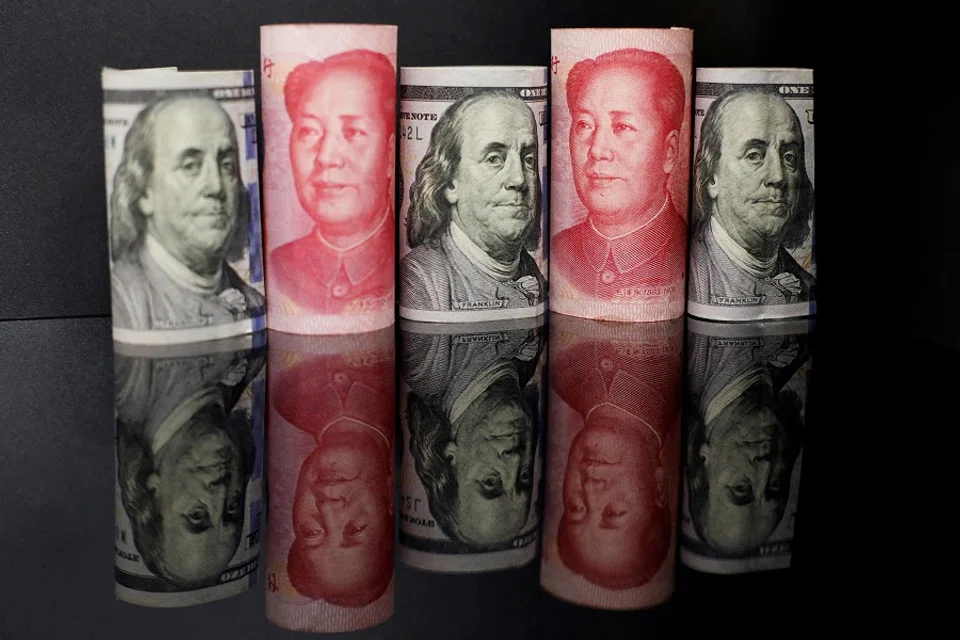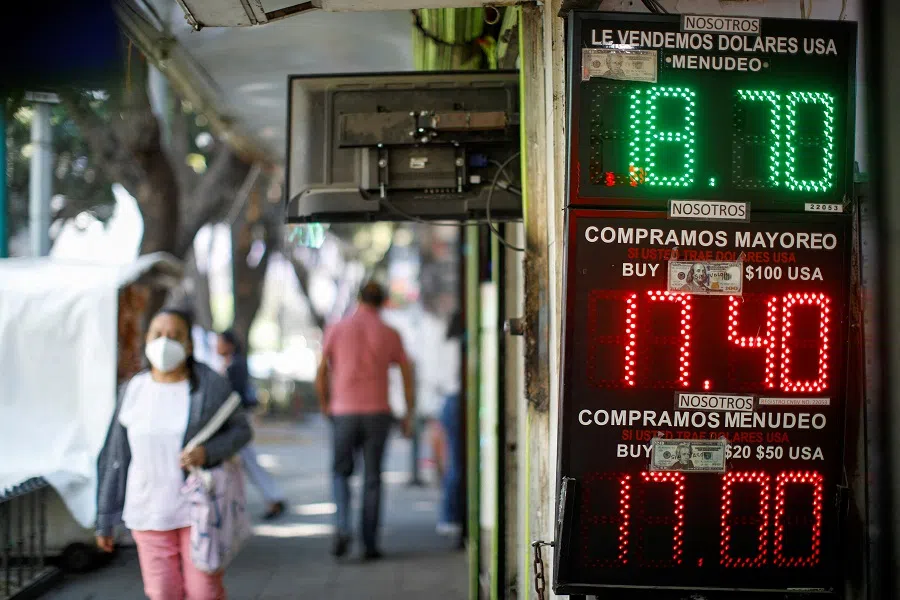The US's dilemma: Dollar dominance or re-industrialisation
In response to former US President Donald Trump's recent scare about China trying to "displace the US dollar as the number one currency throughout the world", academic Han Heyuan says that a certain equilibrium is maintained by the US suffering a trade deficit but safeguarding dollar hegemony. If the US wants to bring manufacturing back to the US, it may not be able to export dollars the way it used to, and cannot hope for the dominance of the US dollar to hold.

The very day after he walked out of a New York courthouse, former US President Donald Trump fired another salvo at his political opponent, US President Joe Biden. This time, he used the RMB as an excuse.
Trump wrote on his social media platform Truth Social on 5 April: "China is trying to displace the US dollar as the number one currency throughout the world. Unthinkable three years ago! If this happens, and under Biden's leadership it probably will, this would be the biggest defeat for our country in its history. We will be reduced to second tier status." He concluded his post with his slogan "Make America Great Again".
A day ago at the Trump-owned Mar-a-Lago resort in Palm Beach, Florida, Trump also attacked Biden's supposedly failed policies, asserting that the US dollar "is crashing, and will soon no longer be the world's standard". But I would like to tell Trump that he is really overthinking this. To address the question he has raised, we must first briefly review the current international monetary and economic landscape.
A dilemma that keeps the US dollar supreme
The Triffin dilemma is an economic concept that originated from American economist Robert Triffin's 1960 book Gold and the Dollar Crisis. Simply put, as the US dollar is the world's dominant reserve currency, countries must use the dollar as a settlement and reserve currency to conduct international trade, which leads to the outflow of US currency and a persistent balance of payments deficit.
The dominance of the US dollar rests on the premise that the dollar remains stable. But this requires the US to maintain a balance of payments surplus. As these two requirements contradict each other, this becomes a dilemma, or what's known as the Triffin dilemma.
... China today is still a typical manufacturing and export-oriented country, unlike the US, which is a massive consumption and import-based country.

This concept actually sums up the current international monetary and economic landscape: as the US dollar is the world's dominant currency, other countries must use the dollar as a settlement and reserve currency. And because there is demand for the dollar, countries have to stockpile dollars from foreign exchange earned through exports. On the other hand, as the US supplies dollars, if it wants to safeguard its position as the world's dominant currency, it will have to export dollars by running a trade deficit.
It is precisely because the above holds true that Trump's concern is unfounded. The reason is simple: the fact that a country's sovereign currency is able to become the world's dominant currency speaks volumes about the country's creditworthiness, level of military support, and even the currency's full convertibility. We need only consider one point: China today is still a typical manufacturing and export-oriented country, unlike the US, which is a massive consumption and import-based country.
Under the current international monetary system, can China export the RMB without running an international trade deficit and a current account deficit? If it is unable to export the RMB, how can other countries use the RMB as a settlement and reserve currency? Observably, it is still too early to say that the RMB is about to replace the dollar.

On the other hand, the US is easily faced with a dilemma due to its "re-industrialisation" strategy and plans to "bring manufacturing back to the US. Under the current international distribution of labour, emerging markets have taken over the manufacturing industries transferred from developed economies during the latter's "de-industrialisation" phase.
These emerging markets' manufacturing sectors are now growing rapidly, with rather clear international competitiveness. Comparatively, the manufacturing sectors in developed markets are less competitive in the international market due to higher labour costs, higher taxes and other factors. Although this economic landscape cost the US a large trade deficit, it has strengthened the dollar's dominant position in the international monetary and trading system.
... if the US's plans to re-industrialise or to bring manufacturing back to the country are implemented, and the US achieves a balanced trade or trade surplus, how is the dollar to export itself?
Bringing manufacturing back to the US could weaken dominance of the dollar
The problem is that the aim of the US's re-industrialisation strategy or desire to bring manufacturing back to the US is to narrow the international trade deficit - Trump even wants to achieve a balanced trade or trade surplus. But the US will be inevitably trapped in another dilemma because of this: if the US's plans to re-industrialise or to bring manufacturing back to the country are implemented, and the US achieves a balanced trade or trade surplus, how is the dollar to export itself?
If it cannot be effectively exported, how can the dollar play the role of a dominant currency? If that happens, the dollar's dominant position in the international monetary system, or the dollar hegemony, will be shaken.

That is to say, the US has to choose between implementing its re-industrialisation strategy and safeguarding the dollar hegemony: if the US picks the former, this implies that dollar hegemony will crumble - the country will no longer be able to export dollars via international trade deficits and current account deficits. If the US chooses the latter, it must accept the fact that its manufacturing sector will continue to weaken, because that is how the dollar can be exported. But if this happens, it would also imply that the country's comprehensive national power will weaken in the long run as it lacks the support of a manufacturing sector. Simply put, the US's re-industrialisation strategy and its need to safeguard dollar hegemony contradict each other.
Related: Escalating China-US confrontation will accelerate RMB internationalisation | What's in store for RMB internationalisation in 2023? | China's efforts to internationalise RMB gaining a foothold in SEA | Slowly but surely: China partnering Brazil to weaken US dollar hegemony? | Will China's digital currency accelerate the internationalisation of the RMB?





